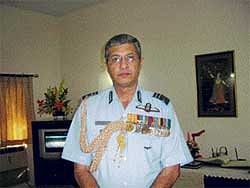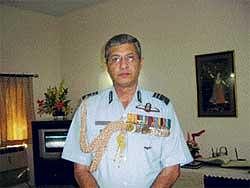
The co-pilot would have tuned one of the aircraft’s radio sets to listen to the Automatic Terminal Information Service (ATIS). ATIS is a continuous voice broadcast giving surface weather, runway in use and type of instrument approach that the pilot may expect.
The landing process starts when the pilot establishes contact with the Approach Radar when he is more than 50 miles out and descending. From then on, the pilot is under the control of the Radar Operator who gives him the direction to steer, height to descend to and speed to maintain. The pilot is now fully concentrated on following the instructions. The radar operator in turn is positioning the aircraft in the stream of aircraft in the landing sequence.
Co-pilot would have acknowledged to Mangalore that he has copied ATIS Information. The co-pilot/commander would have fed relevant meteorological data into the on-board Flight Management Computer (FMC) which displays navigation information extracted from the on-board Global Positioning System, flight & engine parameters such as fuel quantity, rate of consumption etc.
The commander would then select the landing page on FMC, obtain airport data and the basic approach speed. The Commander would have briefed the co-pilot of his intentions.
Pilots would have discussed using Jeppesen charts, how they would execute the ILS procedure – who is pilot flying (PF) the approach, other pilot’s (PNF for Pilot Not Flying) duties, Missed Approach procedure executed before committing to land and “Go Around” procedure after committing to land, ask for “Standard Call Outs” – a phrase that stipulates who calls out flight parameters to ensure that landing checklist is completed.
Jeppesen charts provide route navigation, instrument approach and airport layout charts to enable pilots operate aircraft. At the Transition Altitude, the pilots would have changed altimeter settings to QNH and noted any discrepancies between respective altimeter readings.
If strong headwinds, wind shear or down-draft are reported, PF would revise the speed. At between 15 and 12 nautical miles from touch down, PF would have aligned the aircraft (on auto-pilot or manually) with the centre-line of the runway. PNF would have reported “Established on Localiser” on the Radio-Telephony set to the ATC.
A series of other landing manoeuvres would have been followed. So, if all was normal, why did IX-812 meet with an accident?
Questions asked
* Currency - When did the Commander and Co-pilot fly to and land in Mangalore before May 22, 2010? Was it a route check for Commander’s proficiency to operate to Mangalore? When did the commander fly an Instrument Rating (IR) renewal check on the aircraft? Who carried out the IR check? Did all these conform to Air India’s Operations and Training Manual? Were these tallied with the Boeing Company’s manuals by DGCA before approval?
* Malfunction of FMC - PF flew at a higher approach speed so touching down further than planned? Did PNF carry out a cross-check on the rate of descent on final approach?
* Glide slope erratic - Did PNF discern when calling out advisory altitudes during final approach?
* Mechanical failure - Thrust reversers failed to deploy when PF selected them? Thrust reversers deployed late? Foreign Object Debris (FOD) damage forcing engine flame out?
* Was “Go Around” Procedure executed correctly? When did PF realise he was going to land 2000 feet up the runway and call out “Go Around”? Did PF advance thrust levers (throttles) to Go-Around position? Did PNF simultaneously retract flaps to take-off setting and push down the speed brakes lever?
* Medical Problem - Was PF incapacitated due to some medical emergency?
* Air Traffic Control – Was a proper runway inspection undertaken given aircraft was to land within a few minutes of the opening of the airport? Could FOD have led to a flame out, loss of power and the crash?
(The writer was Commander-in-Chief, Southern Air Command and a pilot in the Air Force VIP squadron flying the Boeing 737.)
